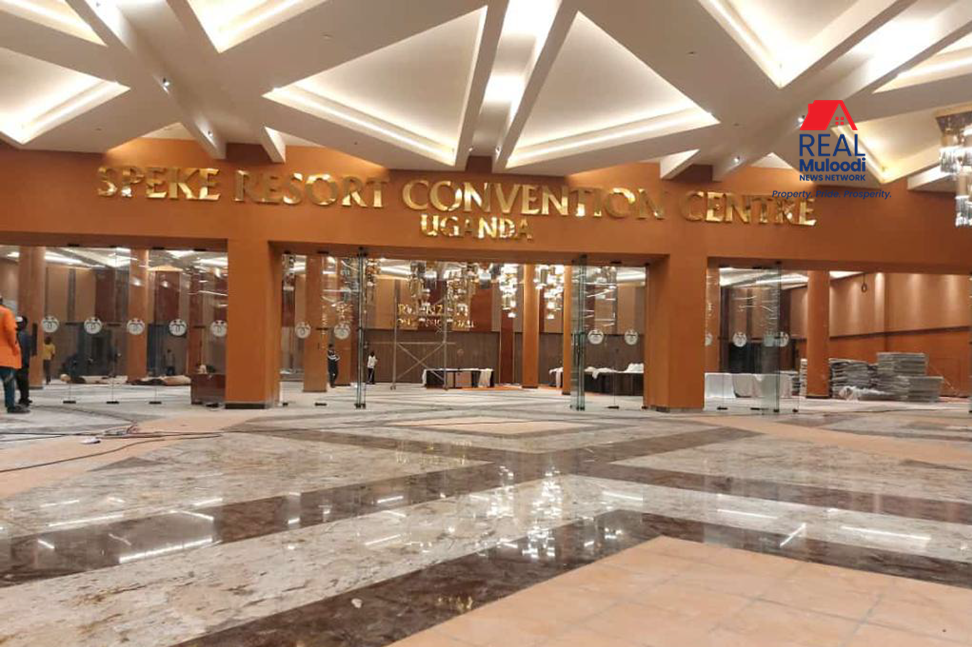UGANDA, Kampala | Real Muloodi News | In a remarkable feat, Uganda recently hosted the 19th Non-Aligned Movement (NAM) Summit and the Third South Summit of the G77 and China at the state-of-the-art Speke Resort Convention Centre.
Nestled within the Ruparelia Group’s expansive 105-acre lakeside Speke Resort Munyonyo and Munyonyo Commonwealth Resort, this facility, a joint venture of the Uganda Development Corporation (UDC) and the Ruparelia Group, stands as a testament to Uganda’s commitment to enhancing its tourism infrastructure.
The Speke Resort Convention Centre boasts a 4400-seater auditorium, a multipurpose hall, 12 high-end conference/breakaway meeting rooms, and a floating restaurant accommodating over 900 guests.
What sets it apart is its integration into an existing luxury resort complex that includes the Speke Resort Munyonyo and Munyonyo Commonwealth Resort, offering a total of 40 indoor meeting and banqueting facilities, with the collective capacity to host an impressive 19,000 people.
Within this hospitality haven, 476 accommodation rooms, including 54 presidential suites and 3 ballrooms, contribute to creating an immersive experience for visitors.
The Speke Resort Convention Centre positions itself as a pivotal component of Uganda’s tourism strategy, linking existing conference facilities and aiming to boost tourist arrivals and length of stay from 1.5 million and 8 nights in 2019 to 2.1 million and 11 nights in 2025, respectively.
The Uganda Tourism Board (UTB) anticipates an increase in inbound tourism revenues per visitor from USD1,052 to USD1,500, amplifying tourism’s contribution to total employment from 6.3% to 8.5% and enhancing its GDP impact.
MICE Tourism as a Catalyst for Growth
At the heart of Uganda’s tourism vision lies the ambition to diversify beyond wildlife-centric attractions.
With only 22.4% of inbound visitors arriving for business purposes, Uganda seeks to tap into the lucrative Meetings, Incentives, Conferences & Exhibitions (MICE) tourism segment. This move aligns with global trends, as highlighted in the World Travel & Tourism Council’s 2022 Report, where business travel accounted for 21% of total travel & tourism spending, reaching a staggering US$1.3 trillion.
MICE tourism not only brings in high-spending visitors but also extends the tourism season. It aligns with the emerging trend of ‘workation holidays,’ enabled by remote and flexible working.
Uganda’s President, Yoweri Kaguta Museveni, has been a proponent of attracting and hosting international meetings, recognizing their significance in showcasing the country.
MICE tourism, heavily dependent on world-class infrastructure, underscores the importance of facilities like the Speke Resort Convention Centre with fully equipped meeting rooms, accommodation, and supporting amenities.
Challenges in Uganda’s Tourism Market
Uganda faces challenges in the nature and structure of its tourism market. A significant 35% of inbound visitors come to visit friends and family, minimising spending on accommodation and food—two major components of tourist expenditure.
In contrast, Kenya boasts nearly 40% of its inbound visitors for holidays/leisure and almost 30% for business meetings, making these two segments highly lucrative.
As Uganda aspires to diversify its tourism, MICE tourism emerges as a strategic complement to its natural attractions.
Uganda Hotel Owners Association (UHOA) estimates reveal a stark contrast with Kenya’s accommodation infrastructure, emphasizing the need for growth.
Uganda’s current 410,000 rooms fall short of the estimated 1,000,000 required for the MICE market.
The low presence of international branded hotel operators is a contributing factor, with only four such chains operating as of June 2019.
Tourism’s Socioeconomic Impact
Tourism infrastructure development, akin to transport and energy infrastructure, necessitates substantial government involvement.
The economic contributions of the tourism sector are significant, with inbound tourism generating UGX 4.6 trillion in 2019.
Domestic tourism expenditure stood at UGX 3 trillion, showcasing the sector’s dual role in catering to both international and domestic audiences.
Tourism’s direct contribution to GDP (3.64%) competes with other sectors like livestock, forestry, and education, highlighting its economic importance.
Employment statistics further underscore the sector’s impact, with tourism directly employing 14.7% of total employment in 2019.
The Speke Resort Convention Centre represents more than a venue for international summits; it symbolises Uganda’s strategic investment in tourism infrastructure.
As the nation strives to diversify its tourism portfolio, MICE tourism emerges as a golden opportunity, with the Speke Resort Convention Centre playing a central role in this transformative journey.
The collaboration between government initiatives and private sector endeavours, exemplified by this joint venture, sets the stage for Uganda to elevate its standing in the global tourism arena.
READ MORE LIKE THIS:
Parliament Probes Govt Investment in Munyonyo Commonwealth Resort
Sudhir’s Response to Tourism Committee About Munyonyo Commonwealth Resort Shares
Gov’t & Real Muloodi Sudhir to build a Shs140b Convention Centre at Speke Resort Munyonyo









